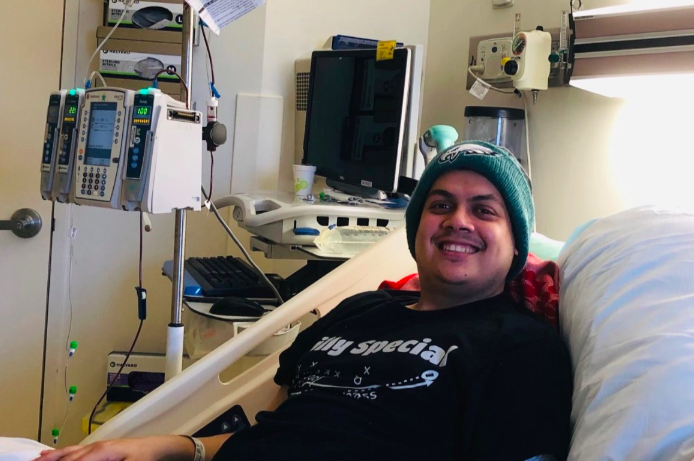Since the beginning, nursing has had to keep up with the advancements of changing times, and now, more than ever, technology is constantly updating and changing to meet ever-changing demands.
Wearables
From smartwatches to wearable ECGs and portable ultrasounds, a lot of new–often wearable technology is proving helpful in hospitals.
If you’ve ever been in a hospital or seen a movie where the patient gets up out of the hospital bed and rips wires off their body, you have likely seen an Electrocardiogram or ECG in action. They are one of the easiest and simplest ways of evaluating the condition of the heart. They would traditionally require multiple electrodes to be placed around the body–usually on the chest, legs, and arms. Anyone with the latest Apple watch will know that you don’t need wires stuck to your chest to get an ECG reading; there are actually many smartwatches that now give ECG readings–the question is, are they accurate enough for nurses to use in a hospital? Well, studies have found that smartwatches alone are incredibly valuable in diagnosing cardiovascular disease. To make sure mobile ECGs are accurate enough for nurses to promote, multiple companies have developed specific ECG monitors that come in a range of shapes and sizes, from slim chest monitors linked to an app to digital stethoscopes.
Handhelds
The next device on the list sums up why advancement in medical technology is readily welcomed: downsizing old machines to new, energy-efficient, fast, and easy-to-use devices is clearly the right move. Portable ultrasounds are quickly becoming the standard. Long gone are the days when you lie on a hospital bed while nurses boot up a giant whirring machine that looks like a supercomputer from the 1970s. You can get a small handheld device that links straight to a computer or smartphone and produces high-definition images instantly.
Like any new tech, it will take time to train nurses on how to use handhelds, but the next generation of nurses completing courses like an ABSN online will be no stranger to all the new gadgets. Although prices are still high, the cost of replacing ancient ultrasounds with a next-gen machine is pretty small, and good old capitalist competition is driving prices down already.
An Otoscope, or as I call it–that weird thing doctors put in my ear hole, is a device used to check up on the ear canal and eardrum. A traditional otoscope is essentially a funnel on the end of a stick with a light and magnifying glass in it. New digital Otoscopes link to smartphones and produce high-definition images of the ear. These Video otoscopes improve diagnostic precision by offering a high-definition view of the ear canal and tympanic membrane, enabling healthcare professionals to detect abnormalities accurately.
Admin and Software
Ok, I admit the admin side of things isn’t that fun or sexy, but any new tech that keeps you away from a desk–meaning more time actually helping patients is probably a good thing. Electronic health records are nothing new; in fact, they have been in use since the 1970s. New software, however, is making the process of creating, accessing, and using a patient’s health records far easier. New electronic health record software like Praxis EMR uses artificial intelligence to adapt to each nurse’s style, eliminating the need for rigid templates. This AI-driven approach has been shown to save time and money while also boosting productivity, efficiency, and the quality of patient care.
Robotics
During the pandemic, we became painfully aware of just how stretched nurses can become; workloads were immense, and the healthcare system was put under a lot of pressure. With this in mind, surely advancements in AI and robotics will have medical applications? They sure do; several companies have been working on robotic healthcare assistants for years. One of these is called Moxi, which “helps hospitals run 24/7” by completing many of the non-patient-facing tasks that consume a nurse’s schedule. Moxi can deliver medicines, fetch PPE, collect samples, and store items, all the while using AI and many sensors to navigate a hospital autonomously.
Artificial Intelligence
Clinical decision support systems (CDSS) are nothing new; they are tools that guide the best outcomes for patients based on all the evidence available; the issue is that sometimes all the evidence is not on one record or in front of the nurse at all. Researchers are looking at how AI can be used to enhance CDSS–picture a software where AI has pulled together all, and I mean all, of the available data on a patient, modeled the potential outcome, and compared it to other similar situations in the blink of an eye. This will help healthcare workers make the best decisions possible in real-time.
The Future of Nursing
As we race ahead into the 2030s and beyond, technology is likely to change healthcare across the board for the better. Nurses could have time freed up from menial tasks by robots and be able to make better decisions because of AI integration while checking in on their patients remotely with wearable tech. All in all, the speed of progress is astounding. Let’s hope the robots don’t take over first.



